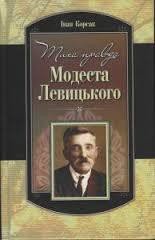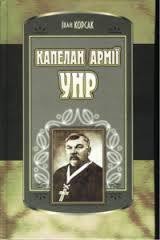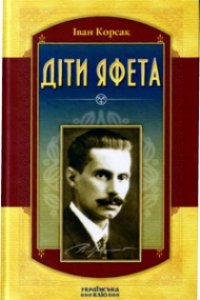Імена твої, Україно - Корсак Иван Феодосеевич "Korsak" (читать лучшие читаемые книги TXT) 📗
probably Elizabeth the rest are her sisters, all the wives of kings. Elizabeth was a daughter
of King Yaroslav of Novgorod-Kyiv, and of his wife Ingigerd, the daughter of King Olaf
Skottkonung of Sweden. She wears a gown and cloak of rich materials, but has the plain
white headscarf of a Viking woman. According to King Harald’s Saga, she accompanied
her husband to England in 1066, so this may be the only portrait to survive of anyone from
the great Viking ‘raiding-army’ that met its end that fateful day at Stamford Bridge».
David Gibbins «Crusader Gold», London: Headline, 2006.
[27] «(Внизу) Немає відомих портретів Гарольда Хардради, але вважається, що
це його дружина Елізабет. Це чудове поєднання настінних написів у соборі Св. Софії
в Києві (Україна), які я сфотографував у 2002 р. Портрет датується XІ століттям, і
на ньому зображення однієї із трьох жінок, якими, можливо, є Елізабет та її сестри,
всі вони були дружинами королів. Елізабет була дочкою новгород-київського князя
Ярослава та його дружини Інгігерди, дочки короля Олафа Скьотконнунга Швеції.
Вона вбрана в плаття та мантію із дорогої тканини, однак на ній також звичайна
біла шаль вікінзької жінки. Згідно із сагою про короля Гарольда, 1066 року вона
супроводжувала свого чоловіка до Англії, тож це може бути єдиний портрет, що
залишився від великої «нападаючої армії» вікінгів, яка зустріла власний кінець того
зловісного дня у битві Стемфорд Брідж».
Гіббінс Девід. Хрестоносець Золото. – Лондон: Хедлайн, 2006.
211
[28] http://www.answers.com/topic/harald-iii-of-norway
Без автора:
«Son of King Sigurd and half brother to King Olaf II (the Saint), Harold was severely
wounded at Stiklarsladir fighting at the age of 15 against the largest army ever assembled
in Norway. Leaving his dead half brother, he took refuge in a lonely farmhouse. His health
recovered, he crossed into Sweden. From there he went to Novgorod, where he was well
received by Prince Yaroslav and in 1032 assisted him in a Polish campaign.
Accompanied by a personal following of 500 warriors, Harold followed the
traditional Varangian route to Constantinople. He arrived there in 1035 and until 1042
seems to have been the leader of the Varangian guard of the Empress Zoe. During that
period he campaigned in the Greek islands, Asia Minor, the Caucasus, Palestine, Sicily,
and Bulgaria. He was resourceful, cunning, resilient, and persevering, and if it suited his
purpose, could be treacherous, vengeful, and cruel. As Gwyn Jones (1968) pointed out, he
was «the epitome of the Viking who lived by rapine and war, believed in fame, riches and
power, and employed fair means and foul». Through his sword and courage, he amassed a
fortune; his standard, the famed «Land-waster, « became an object of dread to his foes and
of pride and reverence to his followers.
Harold left Constantinople because of a dispute with Zoe over a woman and returned
home by way of Novgorod, where he married Elizabeth, the daughter of Yaroslav».
[28] «Син короля Сігурда та кровний брат короля Олафа ІІ (Святого), 15-річний
Гарольд був тяжко поранений в битві Стікларсладір проти найбільшої армії, яка
коли-небудь збиралась в Норвегії. Залишивши свого мертвого кровного брата, він
заховався в покинутому фермерському будинку. Як тільки йому стало краще, він
перейшов до Швеції. Звідти попрямував до Новгорода, де його добре прийняв
князь Ярослав, якому 1032 року він допомагав у поході на Польщу. Із власним
супроводом, що налічував 500 воїнів, Гарольд вирушив традиційним варязьким
шляхом до Константинополя. Він прибув туди 1035 року і, здається, до 1042 року
був там керівником варязької гвардії імператриці Зо. Тоді він ходив походами на
Грецькі острови, Малу Азію, Кавказ, Палестину, Сицилію та Болгарію. Гарольд був
винахідливим, підступним, життєрадісним та наполегливим і, якщо було потрібно,
міг бути зрадницьким, мстивим та жорстоким. Як вказав Гвін Джонс (1968), він був
«епітомою вікінга, який жив грабежем та війною, вірив у славу, багатство та владу і
застосовував чесні та нечесні способи». Він накопичував багатство власним мечем
та сміливістю, його знамено, відомий «Руйнівник земель», стало об’єктом страху
для ворогів та гордості й пошани для наступників.
Причиною того, що Гарольд покинув Константинополь, стала сварка із Зо через
жінку. Він повертався додому повз Новгород, де одружився із Елізабет, дочкою
Ярослава».
212212
У СЛАБКОГО НЕ ШУКАТИМУТЬ ЗАХИСТУ
Винесемо за дужки дискусії істориків про династичні зв’язки ВолинськоГалицької
держави й Візантії. Натомість спинимося на доконаному для всіх фахівців
історичному фактові: два візантійські імператори, Андроник Комнин та Ісаак ІІ
Ангел, у різні часи знаходили порятунок і захист на Русі, у волинсько-галицьких
керманичів. Зрозуміло, до слабкого не прийде по захист імператор величезної
імперії. А що там діялося у часи Ісаака ІІ Ангела, можна судити навіть з короткому
«вікіпедійного» уривка…
[29] http://www.xenophon-mil.org/rushistory/rulers/romanm.htm
«Once he even had as his guest the Byzantine Emperor Alexius III Angelus, when the
latter had been driven out of Constantinople by the 4th Crusade».
[29] «Одного разу в нього (Романа Мстиславича. – ред.) навіть був в гостях
Імператор Візантії Алексіус ІІІ Ангелус, коли останнього вигнали з Костантинополя
під час 4-го Хрестового походу».
[30] http://www.guide2womenleaders.com/womeninpower/Womeninpower1150.
htmhttp://en.wikipedia.org/wiki/Alexios_III_Angelos
[EDIT] Fourth Crusade
«Soon Alexios was threatened by a new and yet more formidable danger. In 1202 the
Western princes assembled at Venice launched the Fourth Crusade. Alexios Angelos, the
son of the deposed Isaac II, had recently escaped from Constantinople and now appealed
to the crusaders, promising to end the schism of East and West, to pay for their transport,
and to provide military support to the crusaders if they helped him to depose his uncle and
sit on his father’s throne.
The crusaders, whose objective had been Egypt, were persuaded to set their course for
Constantinople before which they appeared in June 1203, proclaiming Alexios as emperor
and inviting the populace of the capital to depose his uncle. Alexios III took no efficient
measures to resist, and his attempts to bribe the crusaders failed. His son-in-law, Theodore
Laskaris, who was the only one to attempt anything significant, was defeated at Scutari,
and the siege of Constantinople began.
On July 17/18 the crusaders, led by the aged Doge Enrico Dandolo, scaled the walls
and took the city by storm. During the fighting and carnage that followed Alexios III hid
in the palace, and finally, with one of his daughters, Eirene, and such treasures as he could
collect, got into a boat and escaped to Develton in Thrace, leaving his wife and his other
daughters behind. Isaac II, drawn from his prison and robed once more in the imperial
purple, received his son in state».




